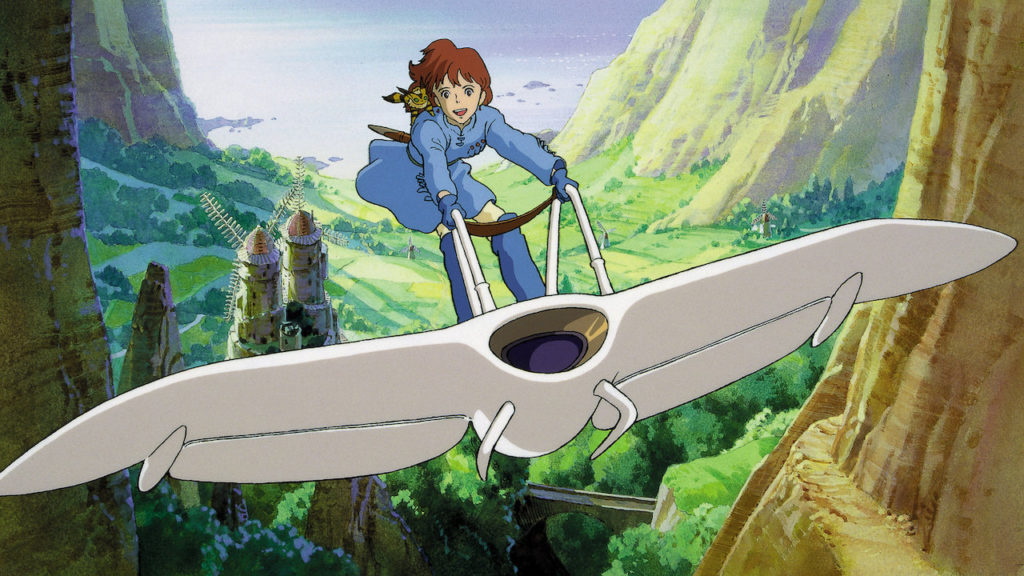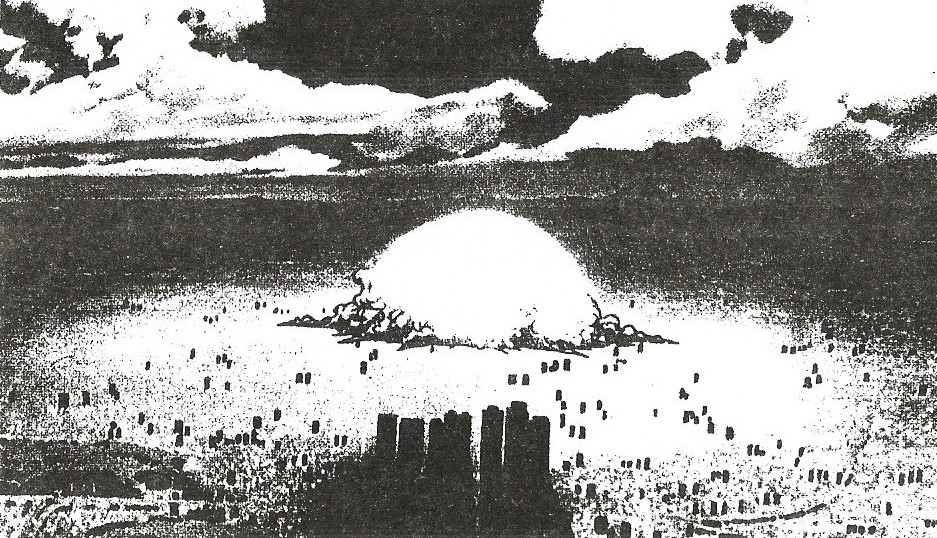Animation
“The video shops in Japan are loaded with animated porno cartoons, which resemble American Saturday kiddie features. I happened to see one, against my will of course, where there are these 12-year old girls who are in the process of initiating a new girl into their school…All the girls in the class disrobe her, and attach her to an elaborate hoist and raise her naked… One of the girls attaches a wire with an alligator clip to one of her toes and the other girl attaches one to her other toe. The third girl flips a switch which sends a jolt of electricity through the suspended girl. She then urinates an eight-foot stream that arcs into a bucket. If they ask for a urine test in Japan, do anything you can to avoid it.”
— Mark Mothersbaugh.
Marine Boy
A fondly remembered Japanese animation series, clearly inspired by Gerry Anderson’s ‘Stingray’; this was produced by the Seven Arts company and broadcast by BBC1 in two seasons; February-April 1969 and July to October 1970. In all there were 26 episodes of 25 minutes, made in glorious black & white.
As the title might suggest, it was about a young teenage super-hero character, who was associated with a World Ocean Patrol through the nepotism of his famous-scientist father ( or uncle, I can’t recall which ). The Patrol were led by one Commander Bolton – a grim hulking submariner, with a serious manner and gruff voice to match. He was the underwater cavalry, always coming to rescue Marine Boy when the brat got himself (and often the world too) into trouble. M.B.’s adventures were shared by a mermaid called Neptune, and the two of them would stumble into world-threatening plots, or weird sea monsters.

Marine Boy had an array of super-scientific gadgets and equipment; like the “oxy-gun” that enabled him to breathe underwater for about an hour or so, and an amazing electric boomerang that he used to subdue his enemies or zap a particularly irritating computer… whatever was menacing mankind that week.
The “animation” such as it was, allowed Marine Boy (and any other character) to cross rooms in only two steps, and race along lengthy corridors in no more than three. It was by all accounts very basic. M.B. had about four facial expressions; angry, determined, serious and on occasion, smiling. Marine Boy also had a pet/sidekick dolphin, called Splasher, who M.B. treated as little more than a sea-horse to ride about the oceans on. He could also communicate with Splasher, though it was not at all clear whether this was telepathy, or just a knack for translating the dolphin’s gurgles.
Other regular hardware in the series included a seemingly endless fleet of flying saucer styled submarines, with deadly laser armament and an unknown top speed. The whole thing was set below sea-level. and I can’t remember whether they ever surfaced or not. The Patrol had a number of bases on the seabed, some permanent and some mobile. And that’s about it. The dates given above are listed in the excellent book, ‘The Encyclopedia of TV Science Fiction’ by Roger Fulton, but I think ‘Marine Boy’ has been repeated since, possibly during the post-Tiswas era of Saturday morning kidshows. (Tony Lee)
Warriors of the Wind
Despite the enormous amount of Japanese animation that is produced, not all that much of it makes it over to this country, and most of the stuff which does is low-grade, TV fodder. ‘Warriors’ is something of an exception, probably because it was adapted from a graphic novel, ‘Nausicaa, of the Valley of Wind’ rather than conceived as a cold & calculating exercise in consumerism, like so many Saturday morning shows. It helps that the man responsible for the comic book, Hiyao Miyazaki, was involved with the celluloid version, which ensured that much of the atmosphere has been retained.

It takes place a thousand years hence, after civilization’s fall following a vague, unspecified disaster not unlike a nuclear war, but not exactly like it either. The people left eke out a fragile existence along the edges of the Toxic Jungle, a vast, ever-increasing wilderness totally inhospitable to humans, inhabited by myriad forms of giant insect. The Valley of Wind is an enclave which benefits from purifying breezes, which quarantine it from the toxins left behind – it is ruled by an elderly king and his daughter, Zandra (aka Nausicaa), the latter of whom has to defend the realm against evil Princess Selena who is trying to resurrect one of the demons responsible for the original disaster, in order to destroy the Toxic Jungle.
Although suffering from some of the skimping that characterises much modern animation, this is more than balanced by the inventive nature of the film – it’s U-certificate belies it’s nature somewhat, and the subtle inferences of the plot might well be too complex for most children. There are some well-staged, impressive sequences which convey motion and a sense of speed beautifully; overall, it provided a highly entertaining hundred minutes. It should be obtainable from any half-decent sell-through merchant at a recommended price of 7.99, not that this stops HMV from indulging in a spot of blatant profiteering by selling it for a tenner. A rare little gem, and definitely one of the odder products of Vestron Video!
Akira
THE most eagerly anticipated film (by the TC staff, anyway) for a long time, ‘Akira’ is the full-length animated version of the Japanese comic book (see elsewhere for plot details). Over two hours long, undoubtedly heading for an ’18’ certificate and with subtitles, this is not your average cartoon. It perhaps strays a little close to live action now and again (the strength of animation is the ability to do things you can’t do with actors) but most of the time it is truly breathtaking. Violent, bloody, funny, frightening in turns and always totally engrossing it’s main fault is a tendency to forego any explanation of events – why IS that character turning into a creature from a Cronenberg wet dream? The animation itself is well up to anything I’ve seen recently, with the action sequences and cityscapes especially praiseworthy. It’s a unique experience – it should be out in January 1991. We’re not in Disneyland any more, Toto.
